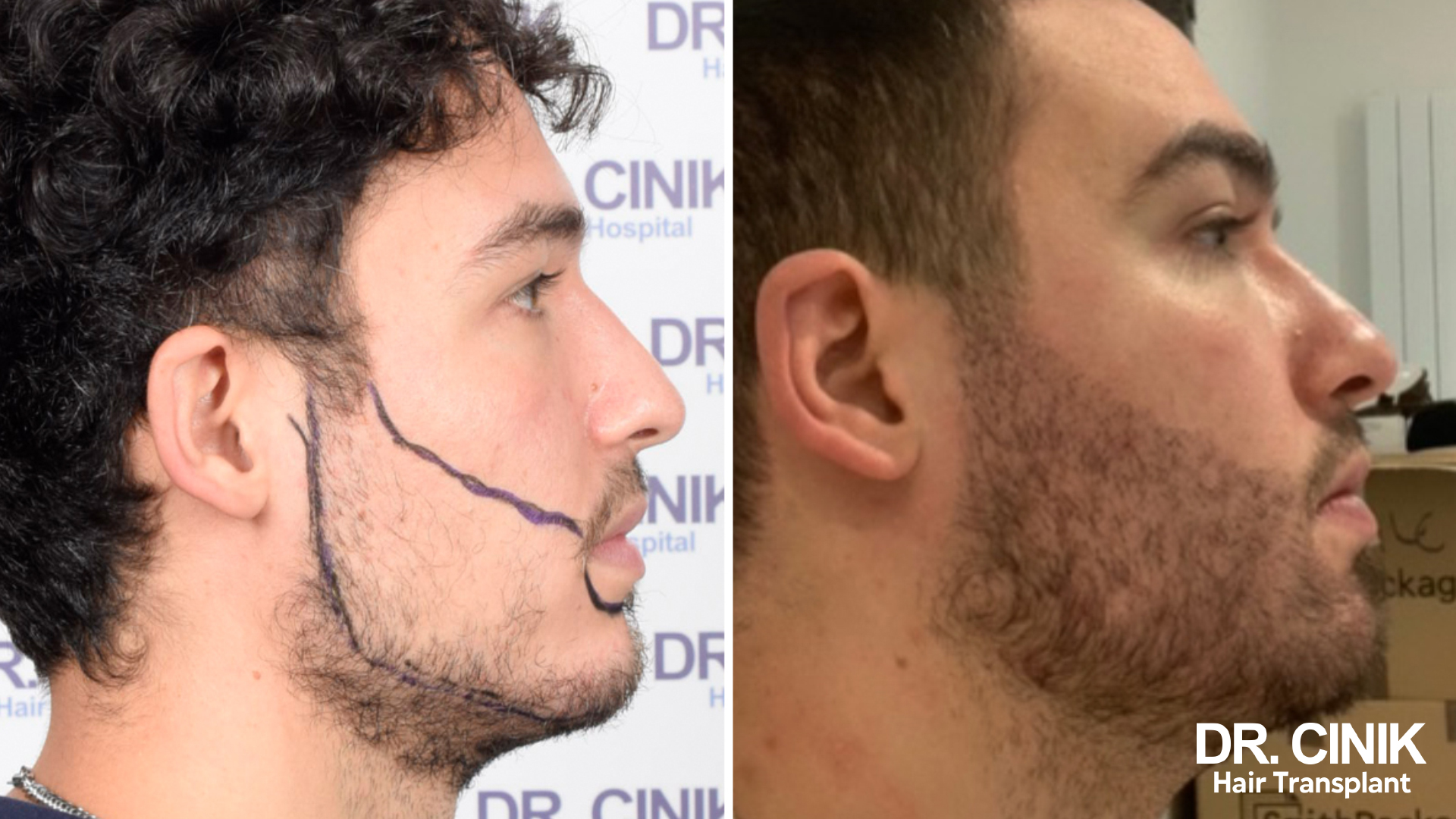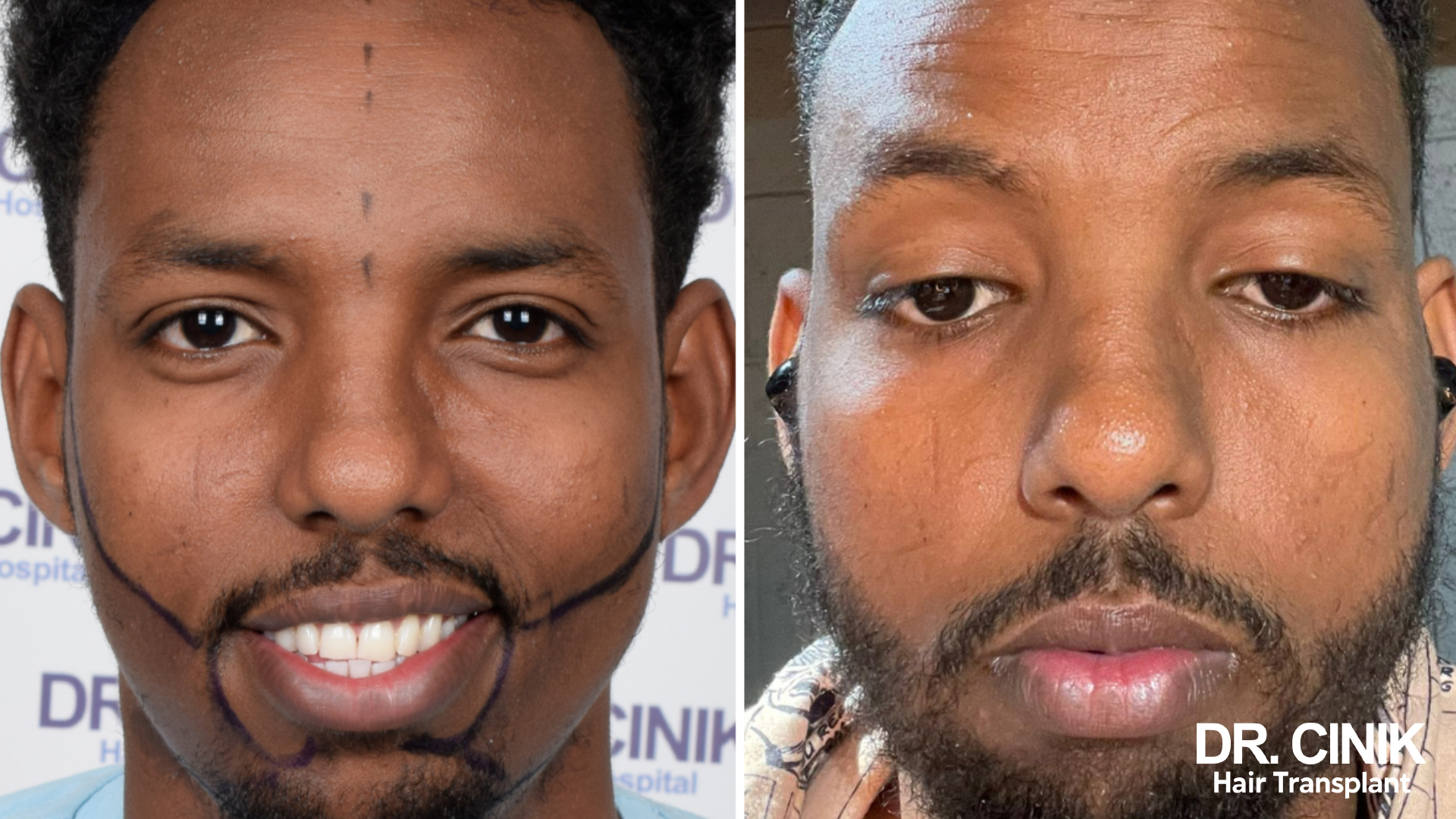Beard Transplant Recovery Timeline: Key Stages and Milestones
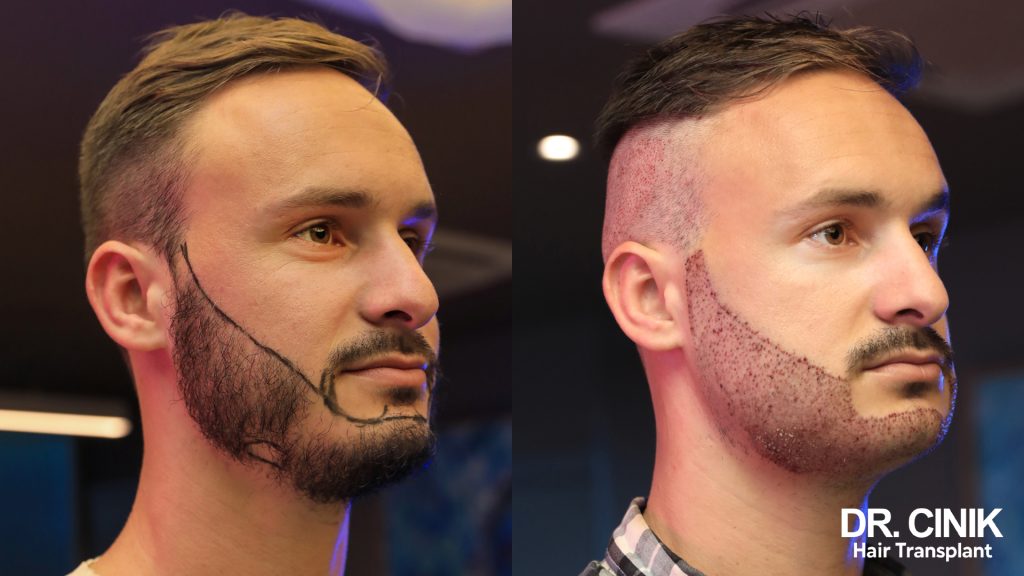
Sommaire
Beard transplant, a surgical procedure designed to enhance the appearance and density of beards, is rising in popularity among men. The regrowth process following a beard transplant is gradual and requires diligent care. Learn how the beard regrowth process unfolds month by month after a beard transplant.
Decoding the Factors Influencing Beard Growth
Several factors affect beard growth, which is why some men find their beards less complete or dense than they’d like.
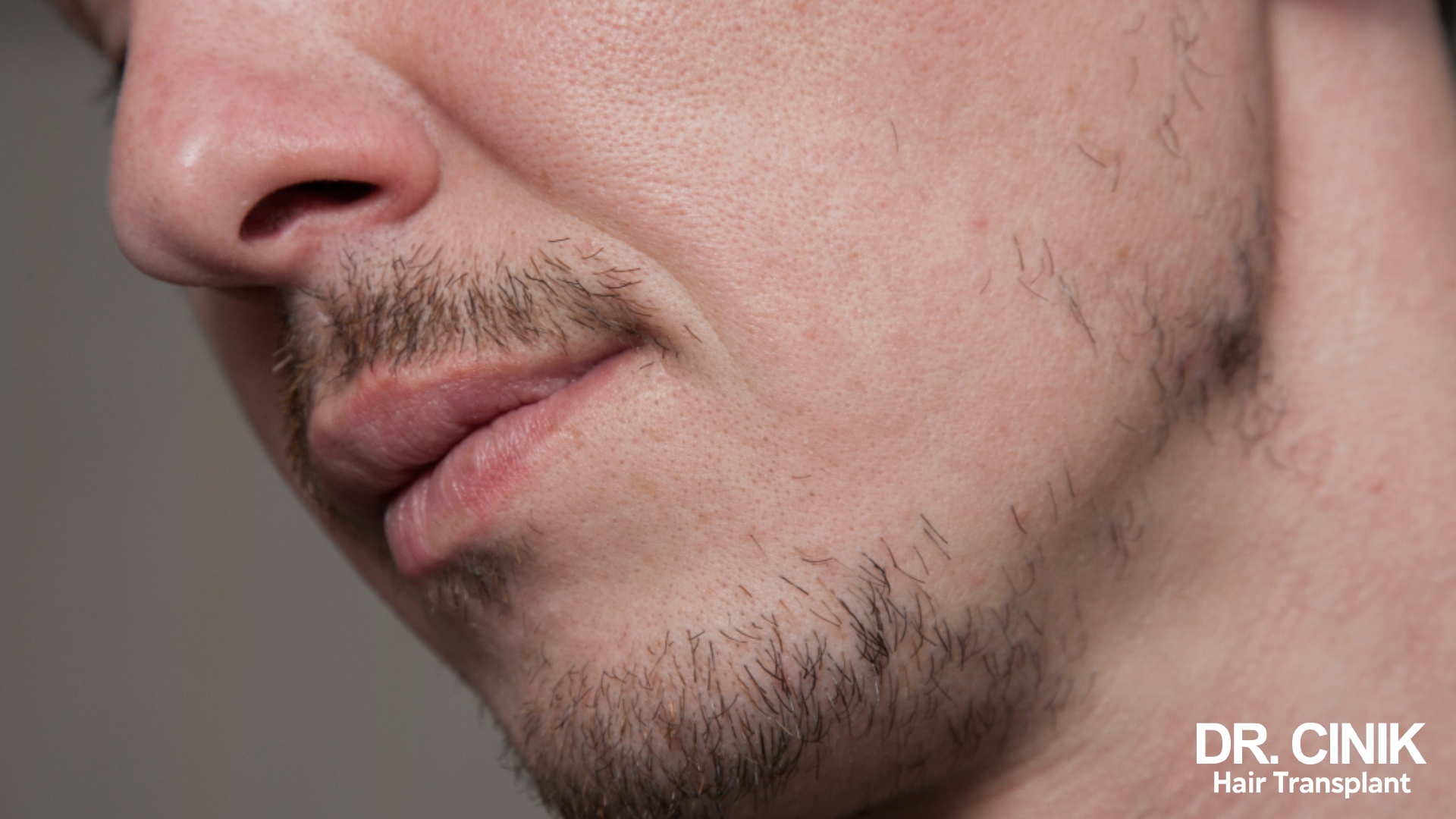
Genetics play a pivotal role in beard growth. The density of your beard is primarily determined by your genetic lineage, much like your hair or eye colour.
Hormonal factors, specifically testosterone and dihydrotestosterone (DHT), are key hormones influencing beard growth. Men with lower hormone levels may have less dense beards.

Localised beard hair loss could signal an autoimmune disease called alopecia areata, where the immune system mistakenly attacks hair follicles, resulting in hair loss.
The Beard Transplant Procedure
A beard transplant aims to improve beard density and growth in men.
The procedure entails removing hair follicles from the patient’s head, where hair is more resilient to falling out, and transplanting them to the face.
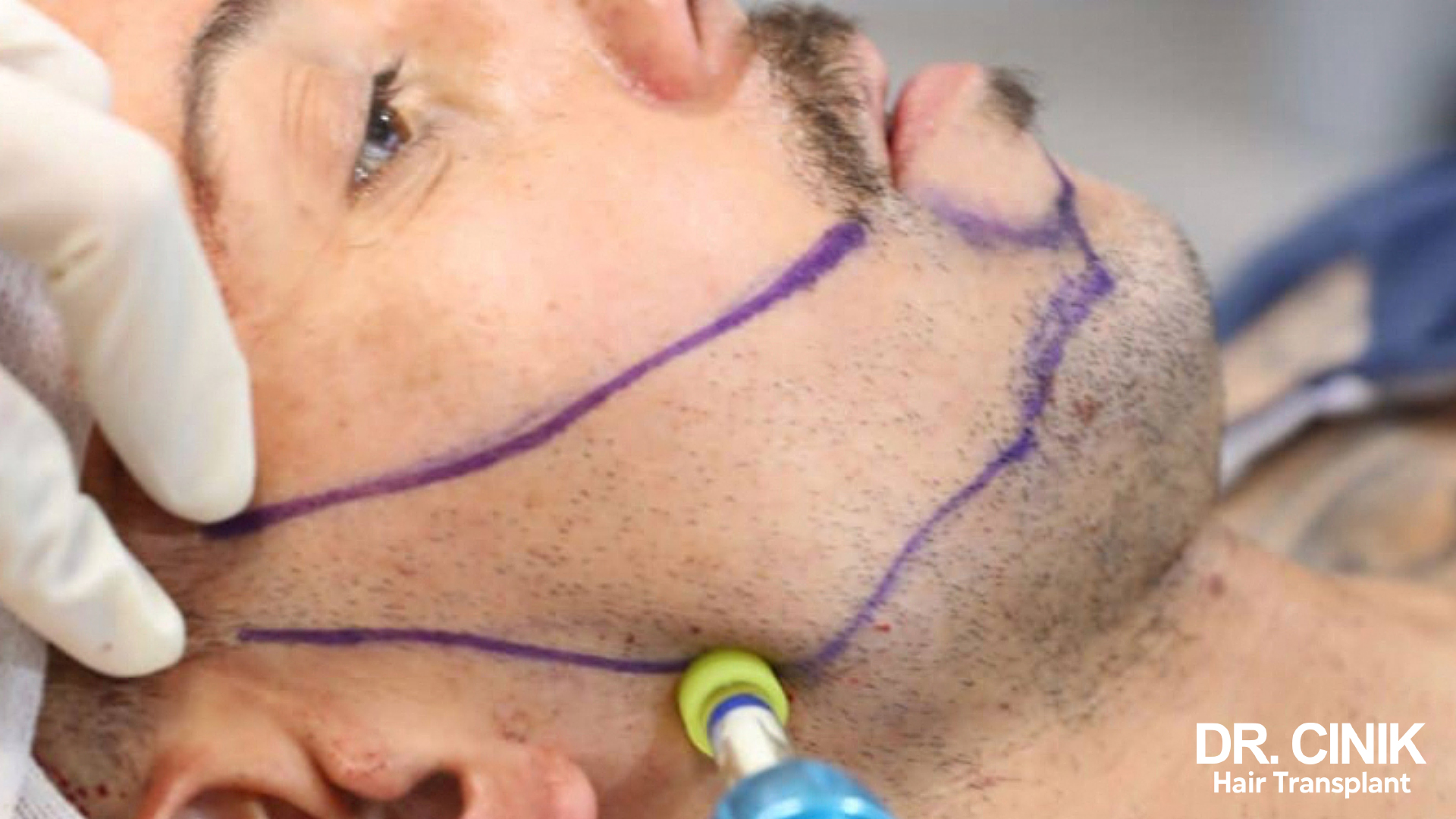
Each follicle is carefully implanted to mirror the patient’s natural beard growth pattern, ensuring the most natural appearance possible. Following the procedure, patients must follow a recovery regimen to ensure successful healing.

Beard Transplant Methods: FUE and DHI
FUE (Follicular Unit Extraction) and DHI (Direct Hair Implantation) are the primary techniques employed in beard transplants. Both methods involve individual extraction of hair follicles but differ in how these follicles are implanted.
The FUE method involves individual extraction of hair follicles from the donor area, typically the back of the head. After extraction, small incisions are made in the beard area where the follicles will be implanted.
The DHI method involves individual extraction of hair follicles from the donor area. Unlike FUE, DHI uses a special tool known as a “Choi pen,” which simultaneously extracts and implants follicles.
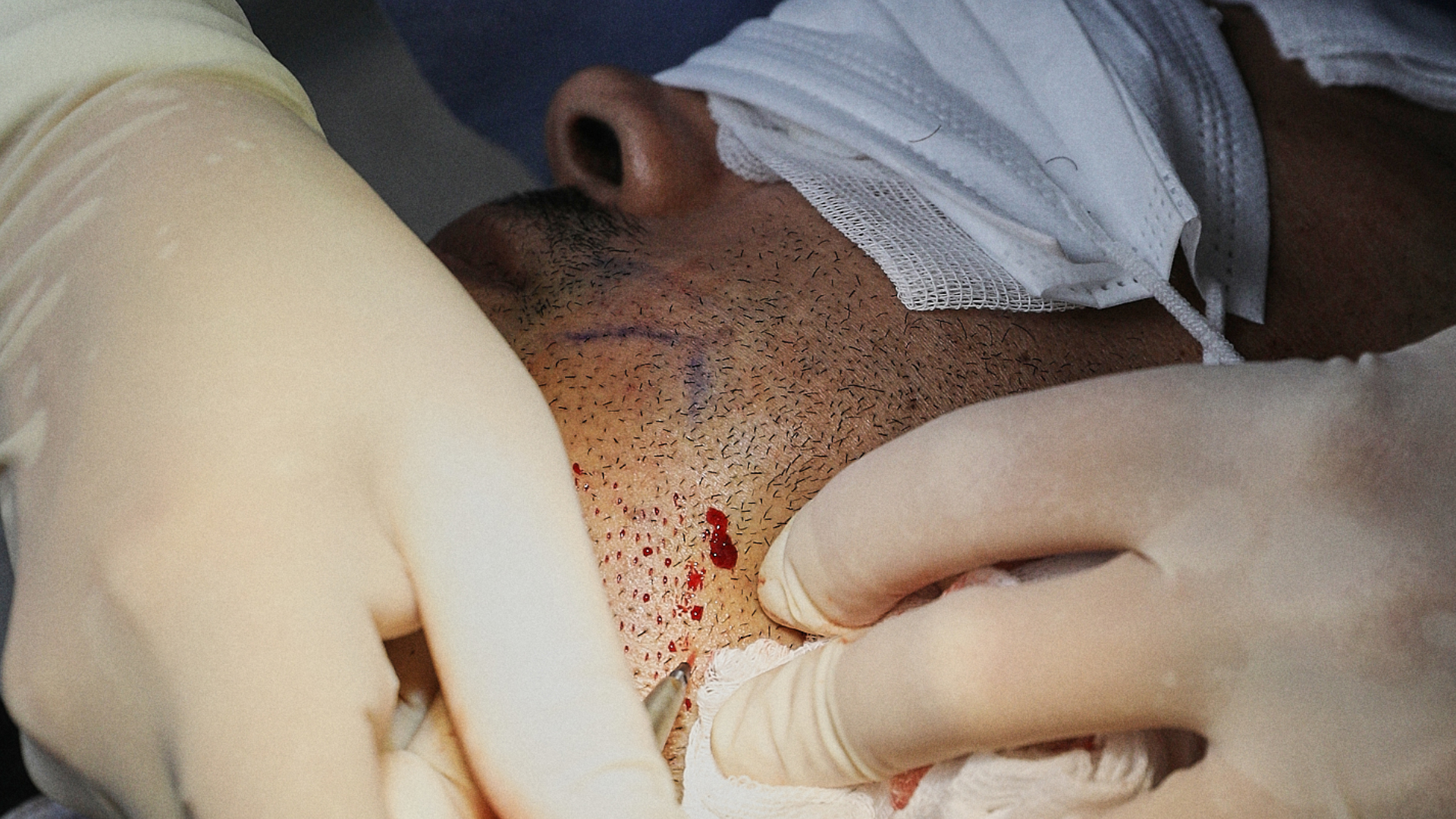
What to Expect from a Beard Transplant
Men often opt for beard transplants to enhance the density of their beards. A beard transplant can fill in sparse areas, creating a fuller, more even look. As the transplanted hair follicles come from an area of the head that resists hair fall, the results of a beard transplant are generally permanent.
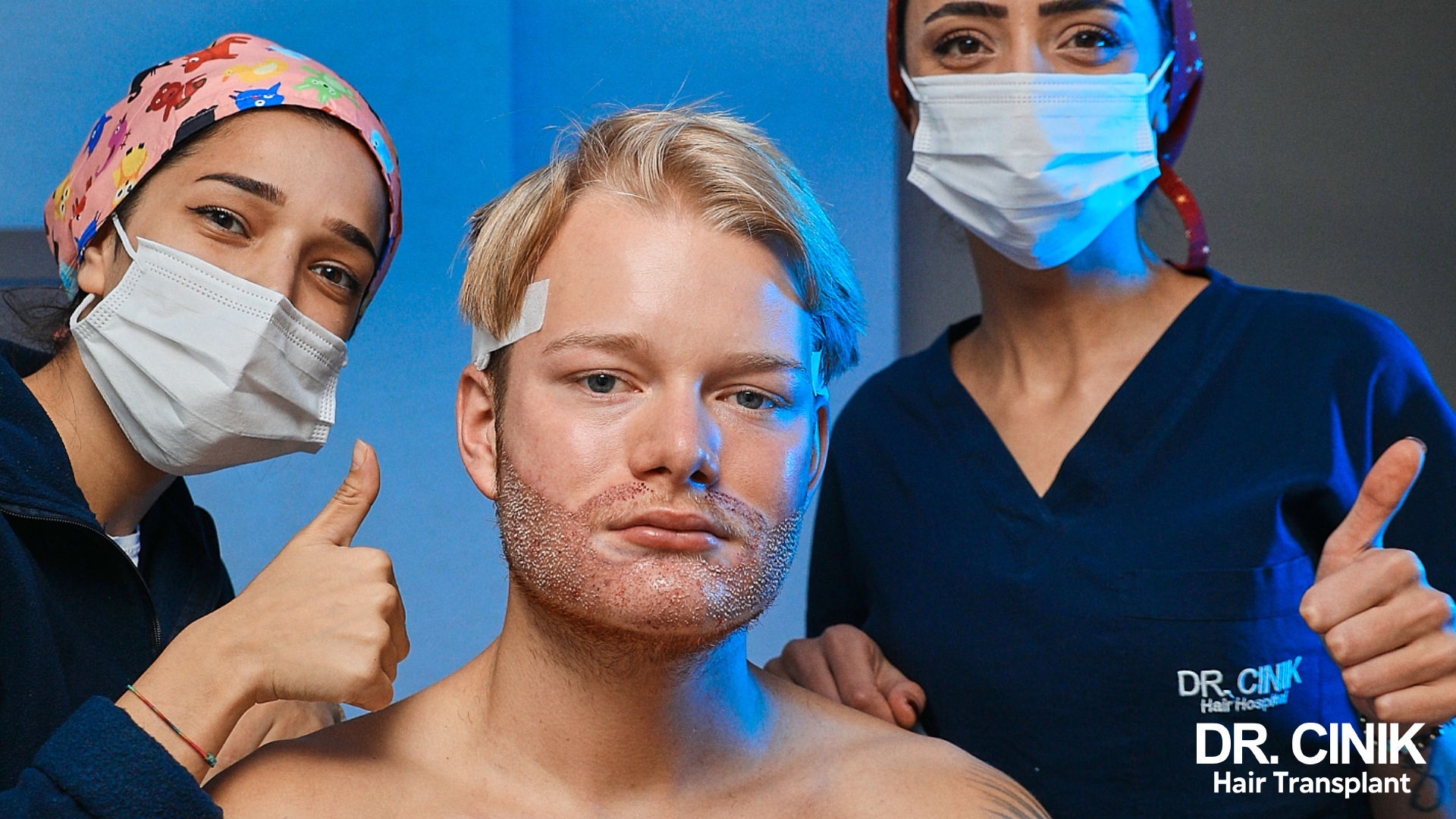
Possible Side Effects of a Beard Transplant
Like any surgical procedure, a beard transplant may lead to temporary discomfort and side effects post-operation.
The most common side effects include:
- Swelling and bruising: These symptoms are common around the graft and harvest areas and should subside after a few days.
- Redness: The implanted area may turn red and tender, a normal reaction that usually disappears within a week or two.
- Pain and discomfort: Pain may be experienced in the grafting and harvesting areas but can be managed with prescribed pain medication.
- Itching: During the healing phase, itching may be experienced in the grafting areas. Avoid scratching as it could damage the new grafts.
Post-Beard Transplant Recovery Timeline

Day 3: Start of Healing
Three days post-procedure, the healing process commences. Small scabs around each transplanted follicle begin to harden and heal, signalling the start of the body’s reparative process.
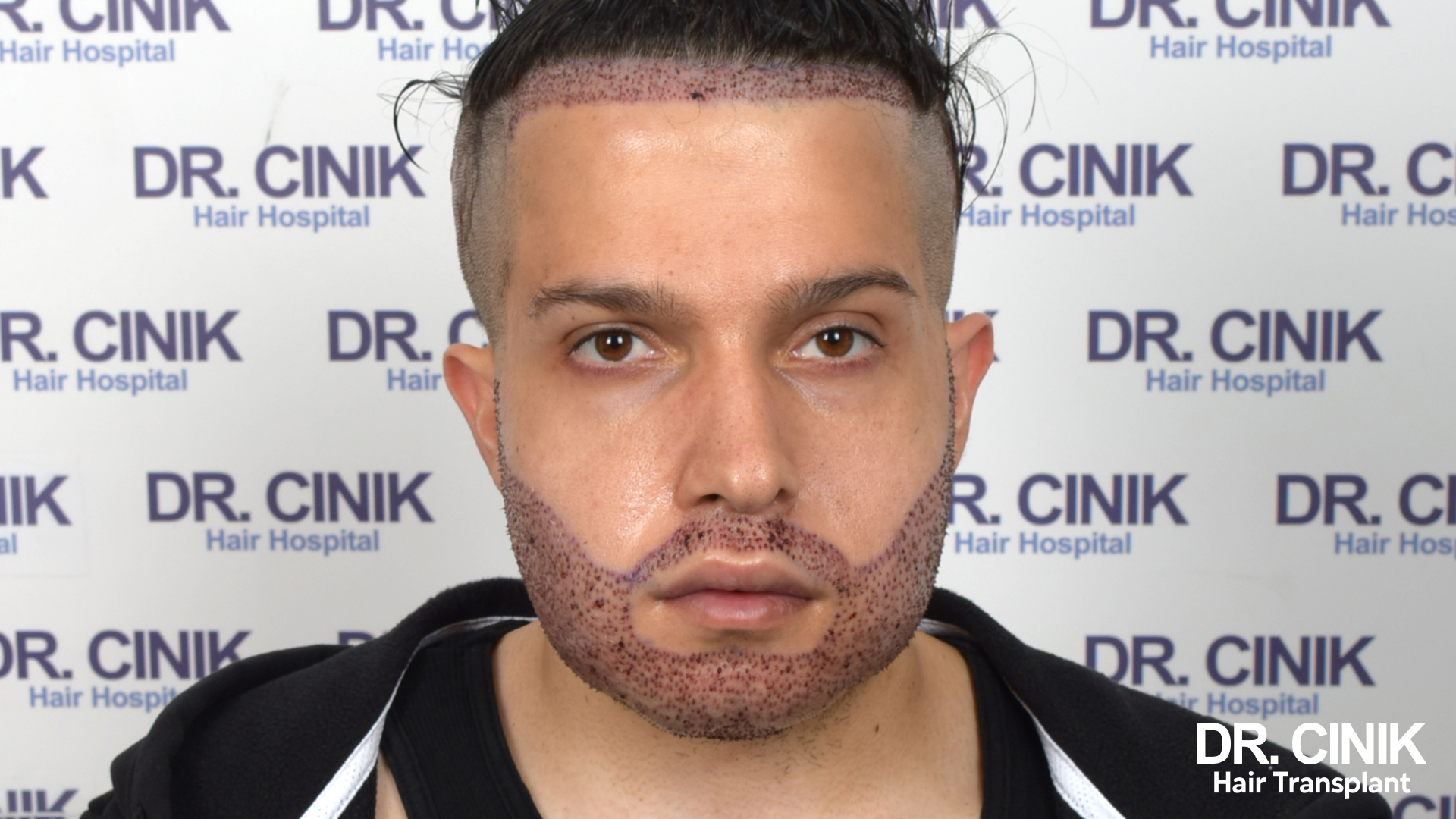
Month 3: Regrowth Begins
Two to three months post-procedure, the transplanted follicles enter the growth phase. Initially, the regrowing hairs might be thin but eventually thicken and strengthen, increasing the beard’s density with each centimetre of growth per month.
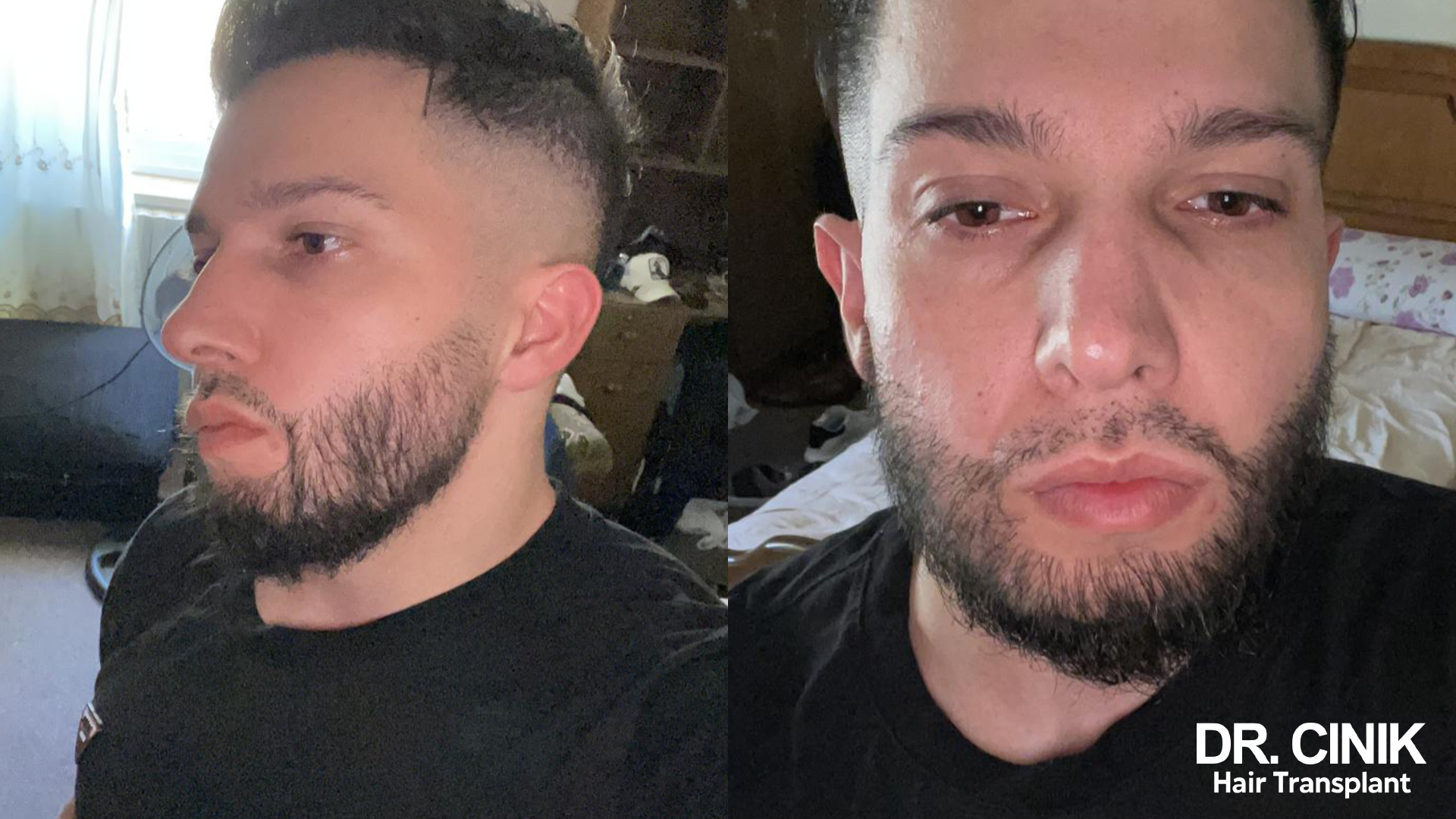
After 1 Year: The Final Result
A year post-transplant, the final results of the procedure become apparent. The transplanted follicles should have healed entirely, and the new hair should have had time to grow, fall out, and regrow.
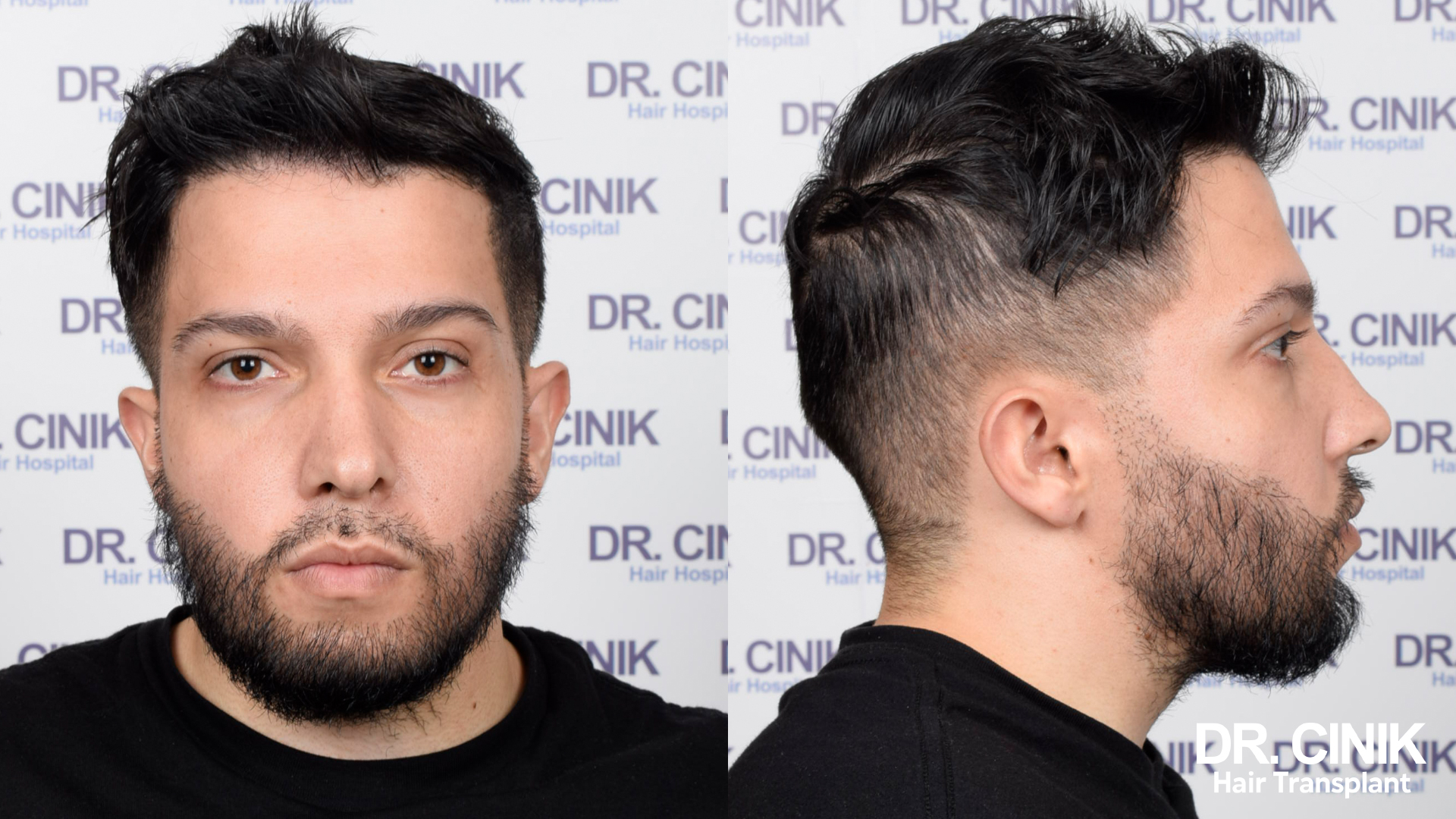
Your beard’s density and coverage should have significantly improved, enabling you to trim, shave, and style your beard as desired.
Keys to a Successful Beard Transplant
Selecting a Skilled Beard Transplant Surgeon: Dr. Cinik’s Expertise
The choice of surgeon is a pivotal factor in the success of your beard transplant procedure. It is crucial to opt for a surgeon with extensive experience and specialisation in beard transplants, such as Dr. Cinik.
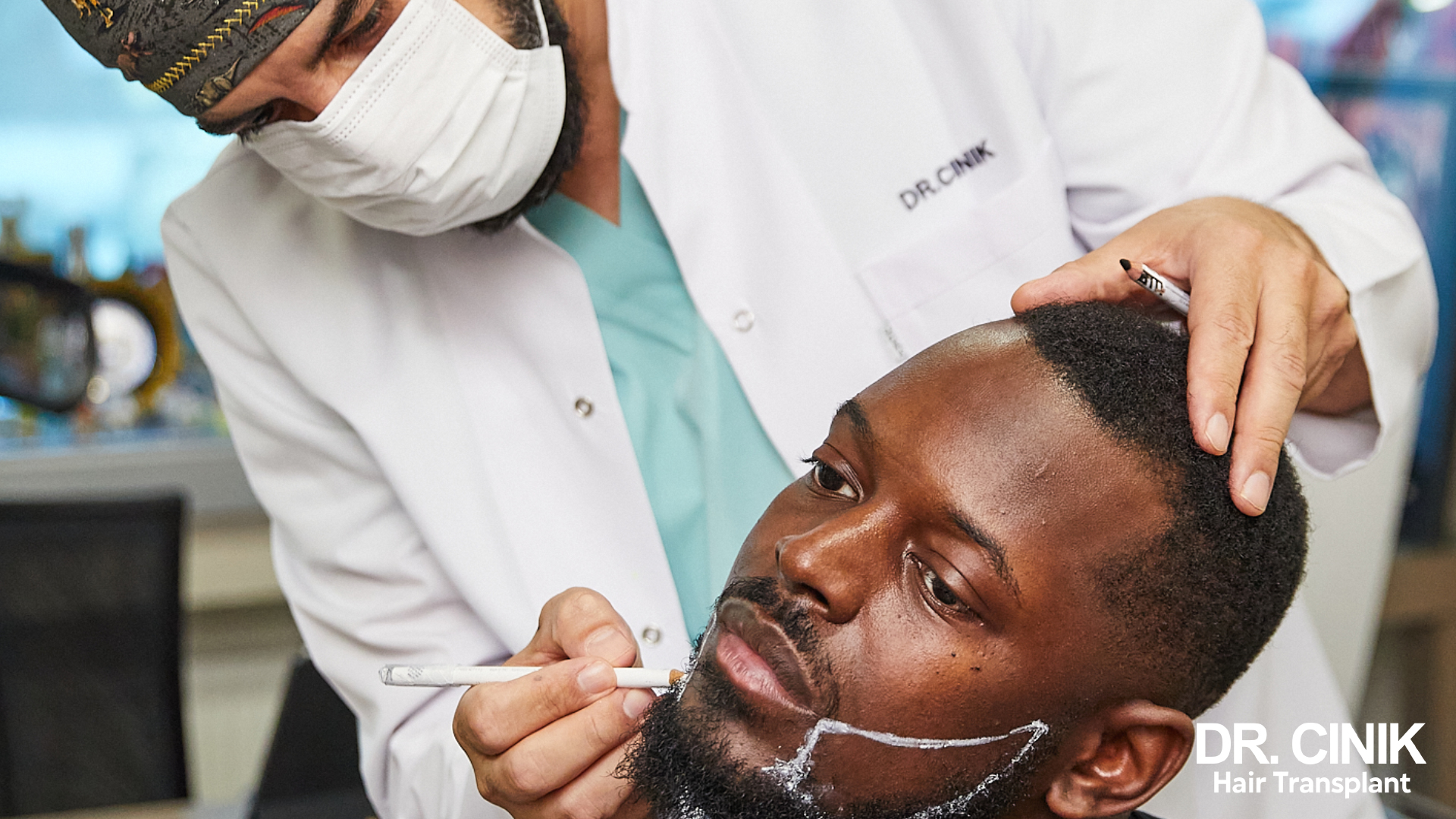
Prepare Well Before the Procedure
Proper preparation before your beard transplant can maximise your chances of a successful outcome. This usually includes a pre-operative consultation, cessation of smoking and alcohol, and proper hydration and nutrition.

Follow Post-Operative Care Instructions
Following your surgeon’s post-operative care instructions is crucial for optimal recovery. Avoid touching or scratching the grafted area to prevent disrupting the healing process and damaging the transplanted follicles. Remember, hair regrowth after a beard transplant takes time, so be patient and expect gradual improvements over the months.
